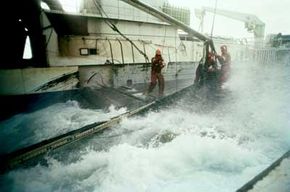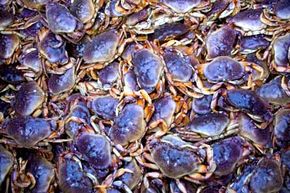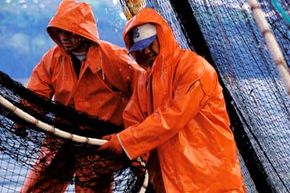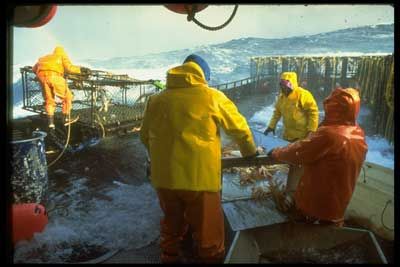Most people's brief list of occupational hazards climaxes at Blackberry thumb. A world away from corporate cubicles, Alaskan fisherman literally risk life and limb to haul in the millions of tons of seafood that ends up on dinner plates.
In general, the commercial fishing industry is not for the weak at heart. Each year, it places thousands of workers on the world's shorelines at the mercy of the ocean, and job lists consistently rank commercial fishing among the dirtiest and deadliest. In Alaska, the stakes are higher since the getting is so good -- almost 95 percent of the U.S. salmon supply comes from the state's fisheries [source: Alaska Department of Fish & Game]. The fishing industry pulls a big load in the Alaskan economy, comprising close to half of the state's private sector employment [source: Alaska Department of Fish and Game].
Advertisement
But the weather and waters sometimes clash with the fury of an angry Poseidon. Hauling up nets or cages weighing several hundreds of pounds is hard work. Add pelting rain, rogue waves and icy decks, and that work becomes lethal. Because of the state's geographical location, the waters are often colder and more unforgiving than other fishing environments.
These conditions add up to the deadliest occupation in the United States -- 128 per 100,000 Alaskan fishermen perished on the job in 2007, 26 times the national average [source: National Institute for Occupational Safety and Health]. Fishing deaths also make up about a third of all occupational fatalities in Alaska each year.
But within the Alaskan fishing industry, one subset takes the title of most unsafe -- crab fishing. The focus of the Discovery Channel show "Deadliest Catch," crab fishermen work one of the most dangerous jobs in the world in hopes of reaping the riches that come with a boatload of crab.
Why can crab fishing turn into a Russian roulette game with the sea? And what's being done to help tame these dangers? On the next page, we'll crack open the crab fishing industry to learn why fishermen gamble with their lives on the boats.
Advertisement



